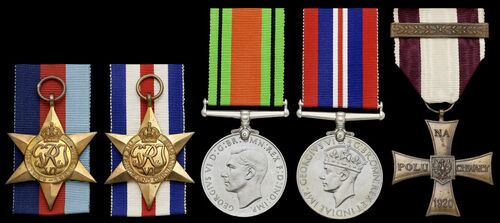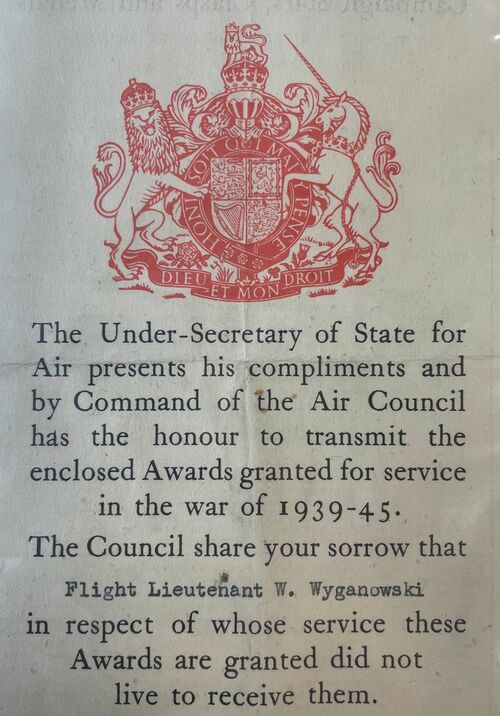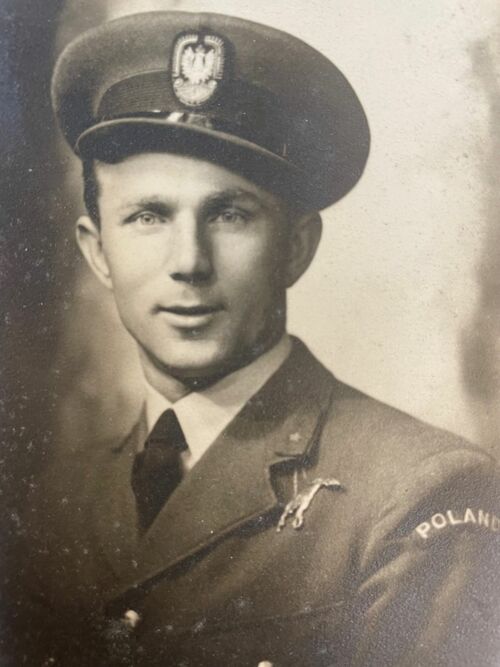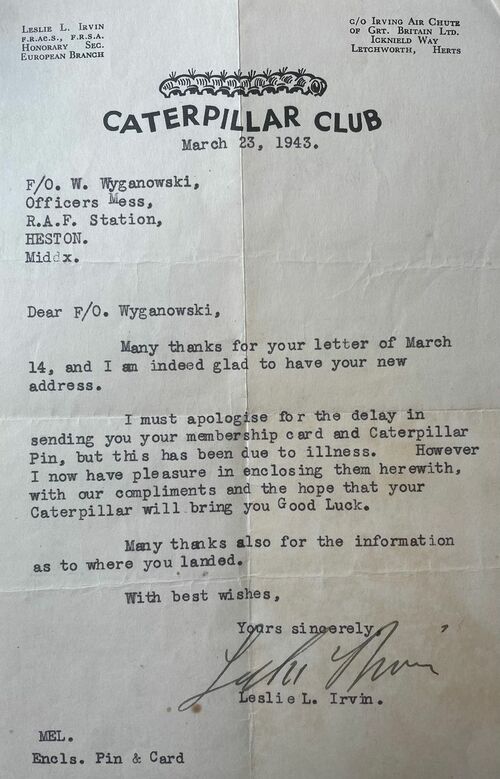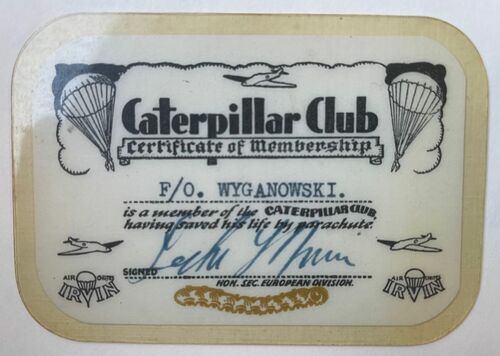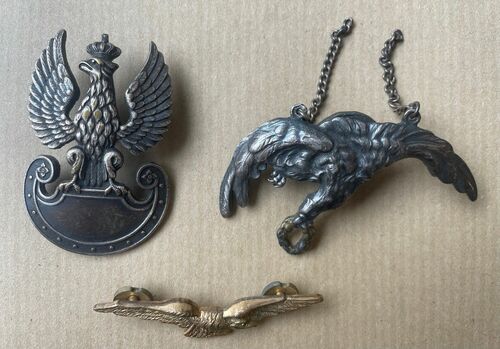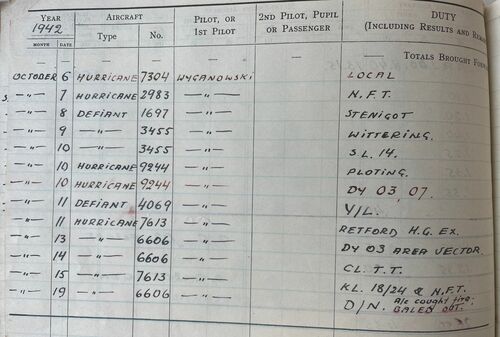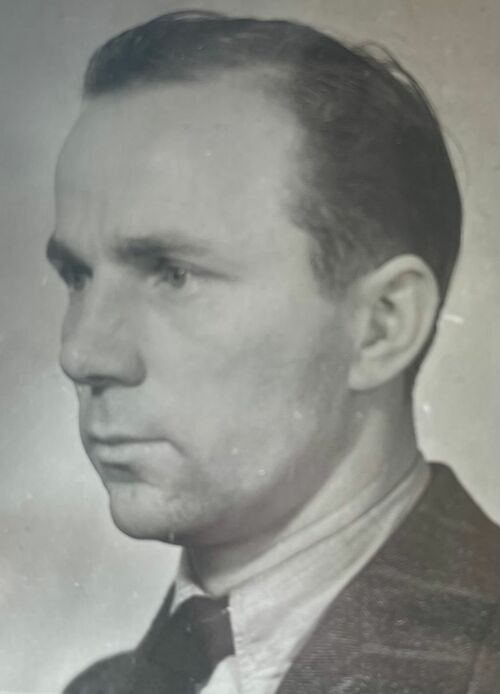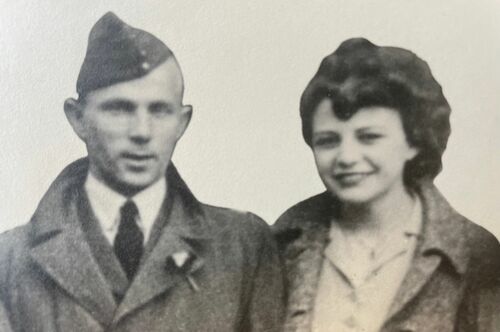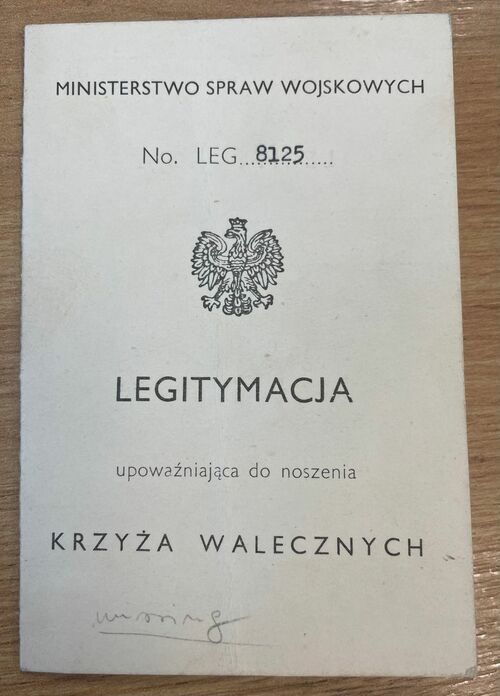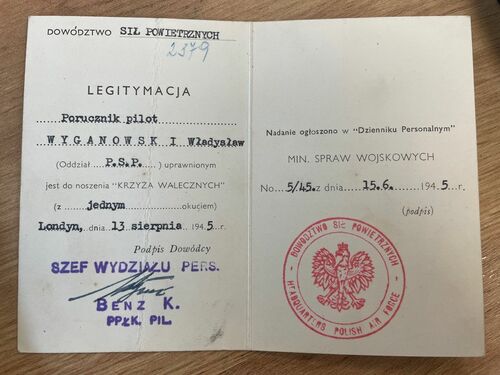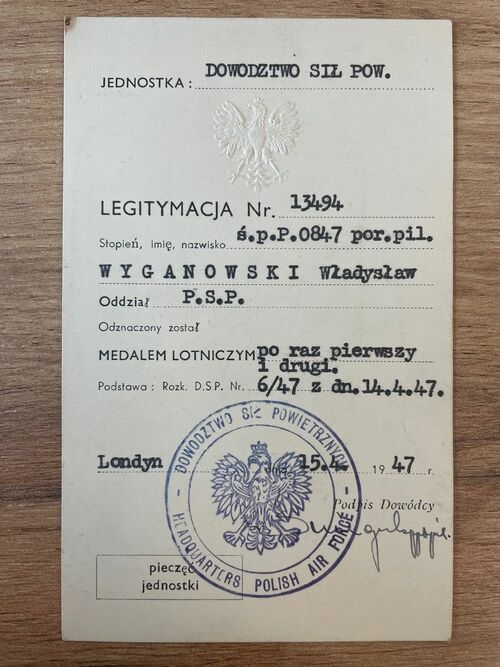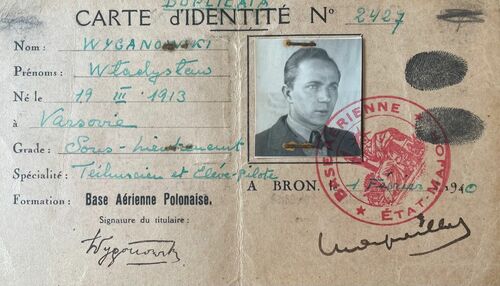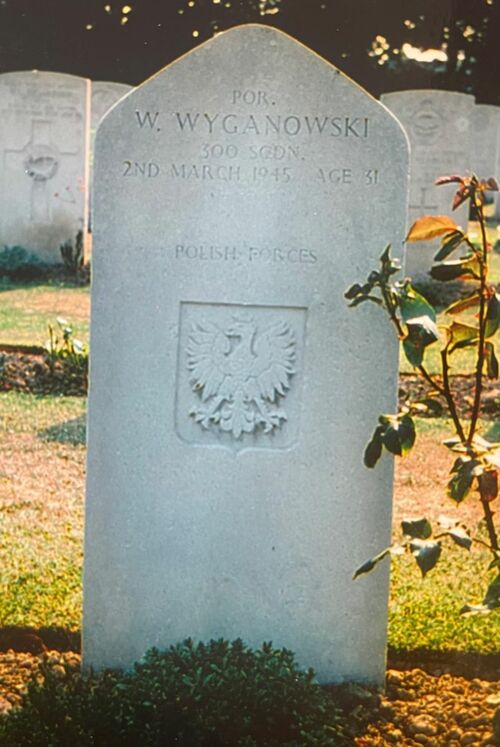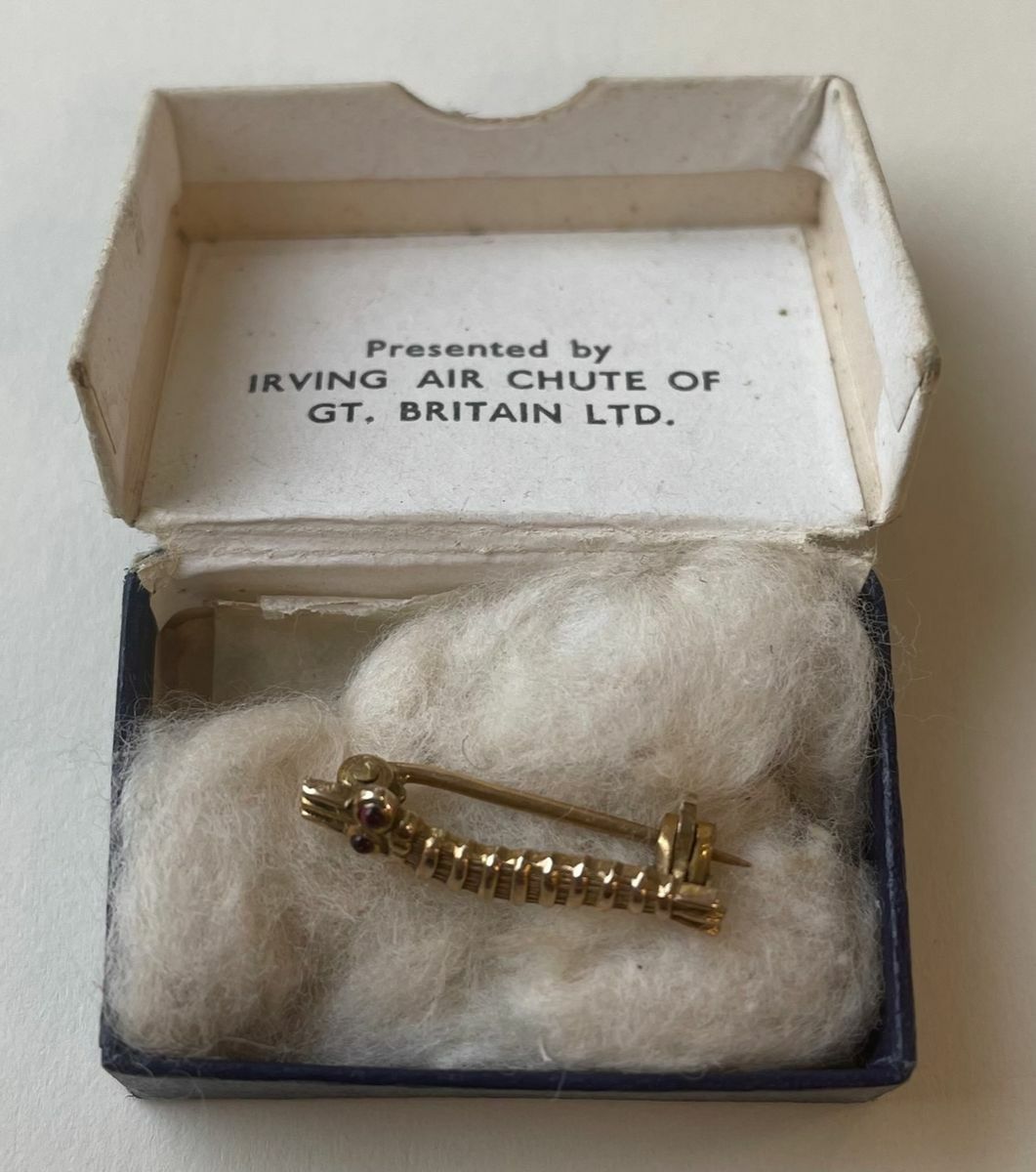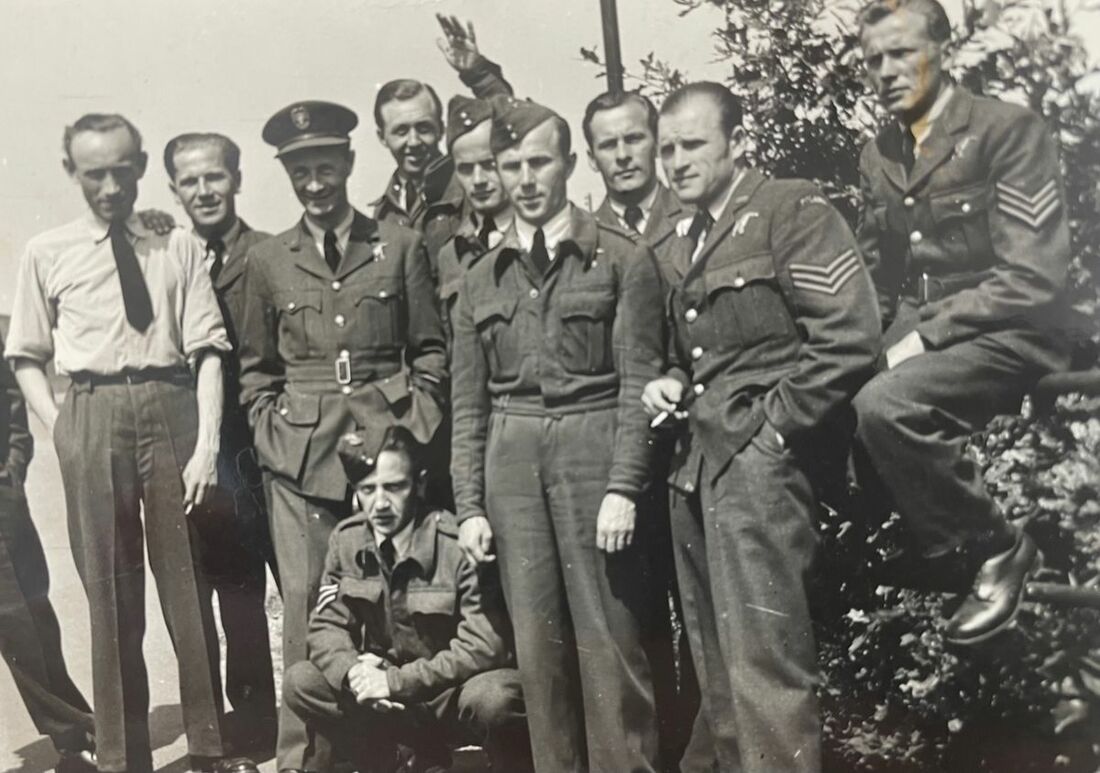Auction: 23001 - Orders, Decorations and Medals
Lot: 187
The well-documented and poignant campaign group of five awarded to Flight Lieutenant W. Wyganowski, No. 300 (Masovian) Squadron, Polish Air Force, who won the Polish Cross of Valour and Bar
He had previously become one of a small band of Polish Airmen to earn membership of the Caterpillar Club but was tragically killed in action over Cologne when his Lancaster was shot down on 2 March 1945
1939-45 Star; France and Germany Star; Defence and War Medals 1939-45, in their forwarding box named to 'Mrs. B.. Wyganowska, 4, Goldsborough Road, Town Moor Avenue, Doncaster.' and the Air Council Condolence slip in the name of 'Flight Lieutenant W. Wyganowski'; Poland, Republic, Cross of Valour, with Second Award Bar, mounted on a pin and as presented to his widow, good very fine (5)
Wladyslaw Wyganowski was born in Warsaw on 19 March 1914 and went to High School there. He joined the Polish Air Force in January 1936 and having qualified from Pilot School, was appointed 2nd Lieutenant in the Permanent Air Force on 1 October 1938. He was included in the 3rd Technical Class in April 1939 and was forced to cross the border into Hungary in September 1939. It was some adventure just to be able to play his part in the Second World War. Interrogated in a camp at Forteszentmiklos, he managed to get to the Polish Consulate to get himself a passport. Thence he travelled by train, across Hungary, Yugoslavia and Italy, arriving in France on 20 December 1939. Making it to Lyon, he went to the Air Base at Bron and finally made it to England on 13 July 1940. Posted to Blackpool in August 1940, Wyganowski served firstly as a Leading Aircraftman and then re-qualified as a Pilot. He was flying in Hurricane 6066 with No. 288 Squadron on a day/night flight on 19 October 1942 when his aircraft caught fire. Forced to bail out and take to his parachute, he become one of a small band of Polish Airmen to earn membership of the Caterpillar Club; the Badge and Membership card followed in March 1943. Transferring to Bomber Command, he continued his training and eventually joined the famed No. 300 Squadron, Polish Air Force in October 1944. The Squadron was formed on 1 July 1940 and was manned by Poles who had escaped from both the Fall of Poland and of France. At first it was equipped with the dangerously obsolete Fairey Battle, but in August these were replaced with Wellingtons, and the Squadron became part of Bomber Command's main force. The Wellingtons remained in use until March 1944, and in the following month they converted to the Avro Lancaster. In this period had also married Barbara and they had a child.
The website of No. 300 Squadron gives more details of his part in an Op in December 1944:
'The first operational activity of the new month for 300 Squadron came on the morning of the 3rd after a briefing for thirteen crews at 05.00. The target for 183 Lancasters of 1 and 8 Groups was the Urft Dam, situated near the town of Heimbach in the Eiffel region of Germany close to the frontier with Belgium. It was believed that the Germans might strategically release flood water to impede the advance of American forces, and it was decided to destroy the dam to remove it as a threat. They took off from Faldingworth either side of 07.45, and flew out in cloud as far as the Belgian coast. Here the skies cleared, only to fill with thick nine-tenths cloud again at the German border, obscuring all sight of the ground. The Master Bomber descended to 4,000 feet, but was still unable to identify the aiming point, and issued instructions shortly after 09.40 to abandon the operation. W/O Bakanacz and crew failed to pick up the message, and the bomb load was released on a Gee fix onto a small town on a railway line south of Heimbach at 09.52. All of the others complied with the order, and brought their bombs home. At debriefing F/L Wyganowski and crew reported seeing a Lancaster going down in flames and disappearing into cloud at a map reference that places it south-east of Liege. It was at 09.33 on the way out, and six parachutes were observed, identifying it as belonging to 582 Squadron. It was shot down by an enemy aircraft, and the mid-upper gunner was the sole fatality, while the rest of the crew landed safely in Allied-held territory.'
Pilot of Lancaster NG501, which got wheels-up from Faldingworth at 0714hrs on 2 March 1945, he was shot down by anti-aircraft fire and crashed in the vicinity of Zulpicher Strasse and Vottfried Strasse, Cologne. All the crew bar Jacek Filek were killed, but Filek managed to take to his parachute: having made a safe landing he was murdered by the Germans upon capture. Wyganowski was buried in the Hotton War Cemetery, Belgium. His widow was presented his Cross of Valour and Bar by Air Vice-Marshal Izycki in London on 22 July 1947.
Sold together with a most complete archive of original material comprising:
(i)
His Royal Air Force Pilot's Flying Log Book (Form 414), covering the dates 21 July 1941-30 September 1943, together with his Pilot's Notes, translated and printed by the Polish Air Force, April 1943, his name in ink to the cover.
Caterpillar Club Badge, by Mappin & Webb, gold and 'ruby' eyes, the reverse engraved 'F/O. Wyganowski', in its box of issue, together with Membership Card and forwarding letter.
(iii)
Polish Pilot's Badge, by Sosnowski, Warsaw, the chain broken but all present, together with Cap Badge, besides other original cloth Insignia. Also a box of relevant buttons, coins and two watches of the period.
(iv)
Polish Passport, British Driving License and RAF Association Membership Card of his widow.
(v)
A series of official correspondence related to his career and his loss in action.
(vi)
The list of his effects, which include 'Polish Pilot's Badge, chain torn', and several other items and much of the correspondence included with the Lot.
(vii)
A moving letter from his sisters husband, 2nd Lieutenant Dobrowski, from Edinburgh on 14 March 1945. The letter confirms the Wyganowski remained in Poland and his parents were interested in the marriage of their son and were awaiting more news of his being posted missing.
(viii)
Identity Card.
(ix)
Warrant Card for his Polish awards (2).
(x)
A moving series of letters to his wife, before they were married, mainly in polish, with English translations.
(xi)
RAF Escape Compass.
(xii)
Manual on the Mosquito, Operational Performance Notes, the cover marked 'SECRET'.
(xiii)
A quantity of copied official records, reports and research into his career.
Subject to 20% VAT on Buyer’s Premium. For more information please view Terms and Conditions for Buyers.
Sold for
£2,500
Starting price
£2500

